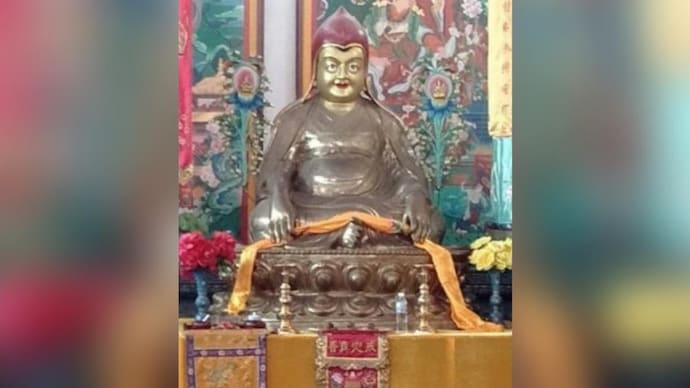China razes 1,000-year-old Buddhist temple
In the latest act of religious oppression, China has demolished a 1,000-year-old Buddhist temple in its Shanxi province. India Today's OSINT team delves deep to find out the truth through the latest satellite images.

The Chinese Communist Party’s (CCP) hatred towards religious minorities and their places of worship continues unabated. The ongoing standoff with India and Tibetan attitudes towards the People’s Liberation Army (PLA) in occupied Tibet, especially along the border areas, has angered China.
In the latest act of religious oppression, China has demolished a 1,000-year-old Buddhist temple in its Shanxi province.

Such is the absolute control of the CCP over the internet in China that even important events are going unnoticed.
India Today's OSINT team delves deep to find out the truth through latest satellite images.
Fuyun Temple
The Fuyun Temple was located 8.5km north-east of Taiyuan airport on the Wujin mountain top aloof from the cacophony of the city and villages.

The Buddhist temple in Shanxi province had become an eyesore to the majority of Han population in this area. The Fuyun Temple gaining popularity amongst the followers of Buddhism in Chinese as well as Tibetan population was unpalatable to the Chinese Communist Party government in Yuci district of Jinzhong prefecture.
The Taoist temples and other attractions in the nearby Wujinshan National Park such as Hehe temple, Dafotai temple, Taiqing Palace, Jade Emperor Pavilion, Jiufeng Tower and Kong Xiangxi’s Summer House were getting overshadowed because of the growing popularity of Fuyun Temple.
CCP Claims of Renovation
The CCP government at prefecture level decided about 15 years ago to reduce the influence of this Buddhist temple under the usual pretext of renovations.

Sources on the ground indicate that local followers of Buddhism and monks were made to sign agreements requesting the government to renovate the temple.
The high-resolution satellite imagery from Google Earth suggests that renovation which began in 2006 was carried out at an extremely slow pace and took almost three-four years to complete.
The sanctum sanctorum earlier of 40m wide was reduced to 30m with an additional veranda to make it look bigger. The monastery which consisted of four large buildings was razed to the ground and a new single building was constructed.

The old prayer halls were converted into library and museum so that no prayers or religious teachings could be conducted.
New guard posts and accommodation were constructed and the temple was given a Chinese name written in huge characters on the newly built lawns for the purpose.
The entire farce of renovation was carried out to ensure the CCP control over all religious activities at the monastery.
Razed to the Ground
The Fuyun Temple was destroyed between July 24 and July 29 without any warning or reason whatsoever. The People’s Armed Police, now part of the PLA, arrived at the Fuyun Temple premises with bulldozers and other earth-moving equipment on July 21.
The police told the monks and other temple staff to leave the premises immediately. The local residents claim the two roads leading to the temple were closed for traffic without assigning any reason.
The low-resolution satellite images of Sentinel indicate that the destruction of the temple probably began after July 24.

The image of July 29 shows the complete premises brought down and debris collected at the centre of the bulldozed area.
The satellite image of September 17 vividly shows that the entire temple complex is now a flat piece of ground except for the electricity pylon.
The CCP actions of the ancient temple with many relics, including the large statue of sitting Buddha and murals, remind of similar destruction of Buddha statue in Bamiyan, Afghanistan, by Taliban terrorists.
(Col Vinayak Bhat (Retd) is a consultant for India Today. A satellite imagery analyst, he served in the Indian Army for over 33 years.)
